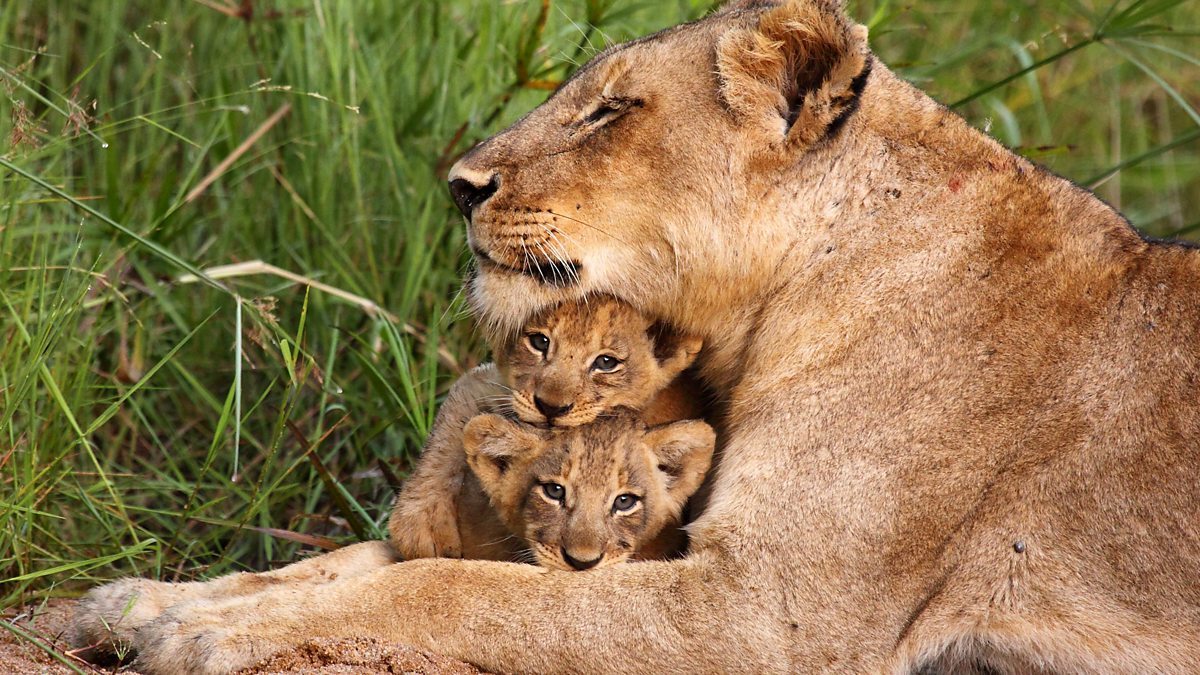
Animal parenting behaviors are as diverse as the animal kingdom itself. From the meticulous care of penguins to the hands-off approach of reptiles, each species has its unique way of ensuring the survival of its offspring. Ever wondered how a mother octopus cares for her eggs or why male seahorses carry the babies? Understanding these behaviors not only fascinates but also provides insights into the survival strategies of different species. In this post, we’ll explore 50 intriguing facts about how animals raise their young. Get ready to be amazed by the lengths to which animal parents go to protect and nurture their young.
Key Takeaways:
- Animal parenting behaviors are incredibly diverse, from penguins balancing eggs on their feet to seahorse fathers carrying eggs in a pouch. Each species has unique ways of caring for their young, showcasing the amazing variety in the animal kingdom.
- Some animal parents make incredible sacrifices for their offspring, like the female octopus who dies after her eggs hatch. Others form unique partnerships, such as clownfish living in symbiosis with sea anemones. These behaviors highlight the extraordinary lengths animals go to ensure the survival of their young.
Animal Parenting: A World of Diversity
Animal parenting behaviors are as varied as the species themselves. From the deep oceans to the highest mountains, animals have developed unique ways to care for their young. Here are some fascinating facts about how different animals parent their offspring.
-
Emperor penguins take turns incubating their eggs in the harsh Antarctic winter. The male balances the egg on his feet, keeping it warm with a special brood pouch.
-
Seahorse fathers carry the eggs in a pouch on their abdomen until they hatch. This unique role reversal makes seahorses one of the few species where males become pregnant.
-
Cichlid fish parents protect their young by keeping them in their mouths. When danger approaches, the fry swim back into the safety of their parent's mouth.
Mammalian Maternal Instincts
Mammals often exhibit strong maternal instincts, with mothers going to great lengths to ensure the survival of their young.
-
Kangaroo mothers carry their joeys in a pouch for several months after birth. The joey continues to nurse and grow inside this safe haven.
-
Polar bear mothers dig dens in the snow to give birth and protect their cubs from the extreme cold. They stay in the den for several months, nursing their young until they are strong enough to venture outside.
-
Elephant mothers are known for their strong social bonds. They often receive help from other females in the herd, known as "allomothers," to care for their calves.
Avian Parenting Practices
Birds display a wide range of parenting behaviors, from building intricate nests to teaching their chicks how to fly.
-
Albatross parents take turns foraging for food and caring for their chick. These seabirds can travel thousands of miles in search of food for their young.
-
Male and female bald eagles share the responsibility of incubating their eggs and feeding their chicks. They build large nests, called eyries, high in trees or on cliffs.
-
Cuckoo birds lay their eggs in the nests of other bird species. The unsuspecting host parents then raise the cuckoo chick as their own, often at the expense of their biological offspring.
Reptilian and Amphibian Care
Reptiles and amphibians may not be as well-known for their parenting skills, but some species exhibit remarkable behaviors.
-
Alligator mothers guard their nests fiercely and help their hatchlings reach the water. They may even carry the young in their mouths to ensure their safety.
-
Poison dart frog fathers carry their tadpoles on their backs to water sources. They find suitable pools where the tadpoles can grow and develop.
-
Some species of skinks, a type of lizard, give birth to live young and protect them from predators until they are old enough to fend for themselves.
Insect and Arachnid Parenting
Insects and arachnids might seem like unlikely candidates for devoted parents, but some species exhibit surprising care for their young.
-
Earwig mothers clean and protect their eggs, even moving them to safer locations if necessary. They continue to care for the nymphs after they hatch.
-
Wolf spider mothers carry their egg sacs with them and, once the spiderlings hatch, they ride on their mother's back until they are ready to disperse.
-
Some species of ants and bees have specialized roles for caring for the young. Worker ants and bees feed and protect the larvae, ensuring the colony's survival.
Aquatic Parenting Techniques
Life in water presents unique challenges for parenting, but many aquatic animals have developed ingenious solutions.
-
Octopus mothers guard their eggs diligently, often going without food until the eggs hatch. They ensure the eggs are well-oxygenated by gently blowing water over them.
-
Male pipefish, like their seahorse relatives, carry the eggs in a specialized brood pouch. They provide oxygen and nutrients to the developing embryos.
-
Some species of fish, like the discus fish, secrete a nutritious mucus on their skin for their fry to feed on. This provides essential nutrients during the early stages of development.
Unusual Parenting Partnerships
Some animals form unique partnerships to raise their young, showcasing the diversity of parenting strategies in the animal kingdom.
-
Clownfish live in symbiosis with sea anemones, which provide protection for their eggs. The clownfish, in return, keep the anemone clean and free of parasites.
-
Meerkat groups, or mobs, work together to care for the young. While some members forage for food, others stay behind to babysit the pups.
-
Male and female penguins of some species, like the Adélie penguin, take turns incubating their eggs and foraging for food. This teamwork ensures the survival of their chicks in harsh environments.
Parental Sacrifices
In the animal kingdom, some parents make incredible sacrifices to ensure the survival of their offspring.
-
The female octopus often dies shortly after her eggs hatch, having devoted all her energy to protecting and caring for them.
-
Some species of spiders, like the Stegodyphus, allow their young to consume their body for nourishment. This self-sacrifice ensures the spiderlings have a strong start in life.
-
Male Darwin's frogs carry their tadpoles in their vocal sacs until they metamorphose into froglets. This unique form of parental care protects the young from predators and environmental hazards.
Cooperative Breeding
In some species, individuals other than the parents help raise the young, a behavior known as cooperative breeding.
-
African wild dogs live in packs where all members help care for the pups. This cooperative effort increases the chances of survival for the entire pack.
-
Florida scrub-jays have "helper" birds that assist the breeding pair in feeding and protecting the chicks. These helpers are often older siblings from previous broods.
-
Dwarf mongooses live in groups where non-breeding individuals help care for the pups. This cooperative behavior strengthens social bonds within the group.
Parental Teaching and Learning
Some animals go beyond basic care, teaching their young essential survival skills.
-
Orca mothers teach their calves how to hunt by showing them different techniques. This knowledge is passed down through generations, ensuring the survival of the pod.
-
Meerkat adults teach their pups how to handle dangerous prey, like scorpions. They start with dead or disabled prey and gradually introduce live, more challenging targets.
-
Chimpanzee mothers teach their offspring how to use tools to obtain food. Young chimps learn by observing and mimicking their mother's actions.
Extended Parental Care
While many animals provide care for a short period, some species offer extended parental care, ensuring their young are well-prepared for independence.
-
Orangutan mothers care for their young for up to eight years, teaching them essential skills for survival in the rainforest.
-
Wolves live in packs where the alpha pair's offspring receive care and protection from all members. The young wolves learn hunting and social skills from the pack.
-
Bald eagle parents continue to feed and protect their fledglings for several months after they leave the nest. This extended care helps the young eagles develop strong flying and hunting abilities.
Unique Nesting Behaviors
Nesting behaviors vary widely among animals, with some species creating elaborate structures to protect their young.
-
Weaver birds build intricate nests by weaving together grass and twigs. These nests provide a safe and secure environment for their eggs and chicks.
-
Sea turtles return to the same beaches where they were born to lay their eggs. They dig deep nests in the sand to protect the eggs from predators and environmental conditions.
-
Some species of frogs, like the glass frog, lay their eggs on leaves overhanging water. When the tadpoles hatch, they drop into the water below, where they continue their development.
Parental Communication
Communication between parents and their young is crucial for survival in many species.
-
Elephant mothers use low-frequency rumbles to communicate with their calves, even when they are out of sight. This helps keep the herd together and ensures the safety of the young.
-
Prairie dog parents use a complex system of vocalizations to warn their young of approaching predators. Different calls indicate the type and urgency of the threat.
-
Dolphin mothers use signature whistles to call their calves. Each calf learns to recognize its mother's unique whistle, allowing them to stay close in the vast ocean.
Parental Adaptations to Environmental Challenges
Animals have evolved various adaptations to overcome environmental challenges and ensure the survival of their young.
-
Arctic foxes change the color of their fur with the seasons, providing camouflage that helps protect their young from predators.
-
Kangaroo rats in desert environments produce highly concentrated urine to conserve water, ensuring they can provide for their young in arid conditions.
-
Some species of birds, like the killdeer, perform a "broken-wing" display to lure predators away from their nests. This behavior protects their eggs and chicks from harm.
Parental Roles in Social Structures
In some species, social structures play a significant role in parenting behaviors.
-
Lion prides consist of related females and their offspring, with males defending the territory. The females work together to hunt and care for the cubs.
-
Bonobo mothers maintain close bonds with their sons, even into adulthood. These bonds help the sons gain social status and mating opportunities within the group.
-
Hyena clans are matriarchal, with females leading the group. The high-ranking females provide better care and protection for their cubs, ensuring their survival.
Parental Strategies for Multiple Offspring
Raising multiple offspring presents unique challenges, and animals have developed various strategies to manage this task.
-
Rabbit mothers nurse their kits only once or twice a day, providing highly nutritious milk. This strategy reduces the risk of attracting predators to the nest.
-
Some bird species, like the American coot, practice brood reduction. If food is scarce, they may focus their care on the strongest chicks, ensuring at least some survive.
-
Octopus mothers lay thousands of eggs, knowing only a few will survive to adulthood. This strategy increases the chances that some offspring will make it in the wild.
Parental Care in Extreme Environments
Animals living in extreme environments have developed unique parenting behaviors to ensure the survival of their young.
-
Snow leopard mothers raise their cubs in remote, rugged terrain, providing protection from predators and harsh weather.
-
Desert-dwelling sandgrouse parents soak their belly feathers in water and fly back to their chicks, allowing them to drink from the feathers. This remarkable adaptation ensures the chicks stay hydrated in the arid environment.
Nature's Parenting Wonders
Animal parenting behaviors are truly fascinating. From emperor penguins huddling to keep their eggs warm to octopuses sacrificing themselves for their young, the animal kingdom is full of unique and surprising ways parents care for their offspring. Elephants show incredible empathy, while poison dart frogs carry tadpoles on their backs to safer waters. Even the smallest creatures, like bees, have complex systems to ensure the survival of their young.
These behaviors highlight the incredible diversity and adaptability of life on Earth. They remind us that parenting isn't just a human trait but a universal one shared across species. Observing these practices can teach us a lot about compassion, sacrifice, and the lengths to which parents will go to protect and nurture their young. Next time you see an animal, think about the amazing parenting strategies it might be using. Nature never ceases to amaze.
Frequently Asked Questions
Was this page helpful?
Our commitment to delivering trustworthy and engaging content is at the heart of what we do. Each fact on our site is contributed by real users like you, bringing a wealth of diverse insights and information. To ensure the highest standards of accuracy and reliability, our dedicated editors meticulously review each submission. This process guarantees that the facts we share are not only fascinating but also credible. Trust in our commitment to quality and authenticity as you explore and learn with us.


